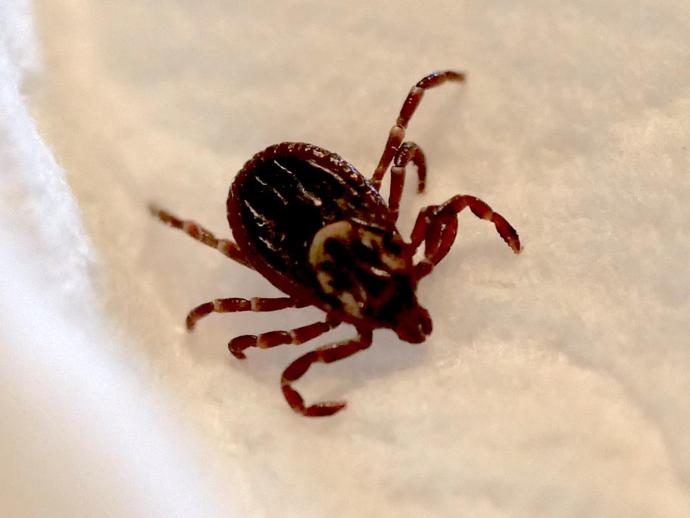July 29, 2020
Today marks my 135th nature update, and I'm guessing that out of all the critters we've looked at, this one would rank #135 in terms of popularity. Dermacentor variabilis, better known as the American dog tick or wood tick, can spread a number of diseases, including Rocky Mountain spotted fever and tularemia (although it's not generally a vector for Lyme disease; the smaller deer ticks are mostly responsible for that one). However, if you'd like to learn the best way to stay safe from ticks of all types, read on!
Dog ticks can be found throughout the eastern and midwestern U.S. In Virginia, the peak tick season is May through July, although they can be found all the way into the fall. Ticks must feed on blood during every one of the stages of their life cycle (larva, nymph, and adult). When ticks feed, they cut a small opening in the skin and insert their feeding tube, which is barbed to help hold the tick fast. They can also secrete saliva with anesthetic properties so that the host doesn't even realize they've been bitten. If the tick picks up a disease from a previous host, it can pass it along to the new host through this saliva. The earlier you find a tick, however, the less likely that it's had time to pass a disease along to you; it takes between three to eight hours for the disease to be transferred.
If you find a tick on yourself, it's best to remove it with either a tick removal tool or a pair of fine-point tweezers. Grasp the tick as close to the head as possible when removing it.
Of course, an ounce of prevention is worth a pound of cure, and the best way to prevent tick bites is to avoid them altogether. So what should you do if, for example, a significant portion of your job involves wandering through the woods taking photos of nature? The answer: Permethrin. All you have to do is buy a spray bottle of permethrin (it goes by a bunch of different brand names, so be sure to look at the active ingredients) and spray a bit on your field clothes (NEVER on your bare skin). Give your clothes a few hours to air-dry and you're good to go! Be sure to read the full directions and use it safely. Permethrin doesn't prevent ticks (or mosquitoes or other insects) from landing on you, but once they touch your clothing, they simply drop off. I've been using it on my field clothes for more than a year now and I have yet to get a single tick bite in that time.
Also, if you hate ticks, then the Virginia opossum (Didelphis virginiana) is your best pal. A 2014 study found that one opossum can eat approximately 5,000 ticks in a single season! #BenInNature
ABOUT THIS POST
Social distancing can be difficult, but it presents a great opportunity to become reacquainted with nature. While he is working from home, Administrator of Science Ben Williams is venturing outdoors each day to record a snapshot of the unique sights that can be found in the natural world.
NATURE PHOTO IDENTIFICATIONS
If you discover something in nature that you would like help identifying, be sure to message us right here on Facebook with a picture (please include location and date of picture) and we'll have our experts help you identify it!

 Hours & Admissions
Hours & Admissions Directions
Directions

